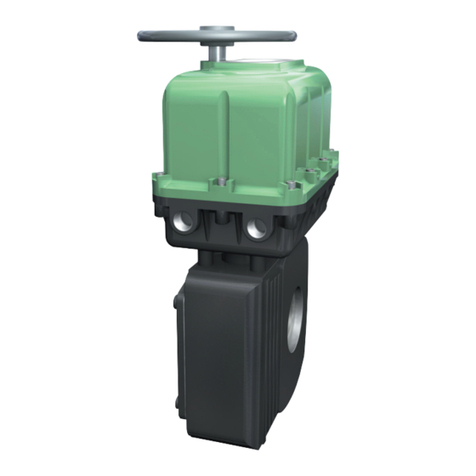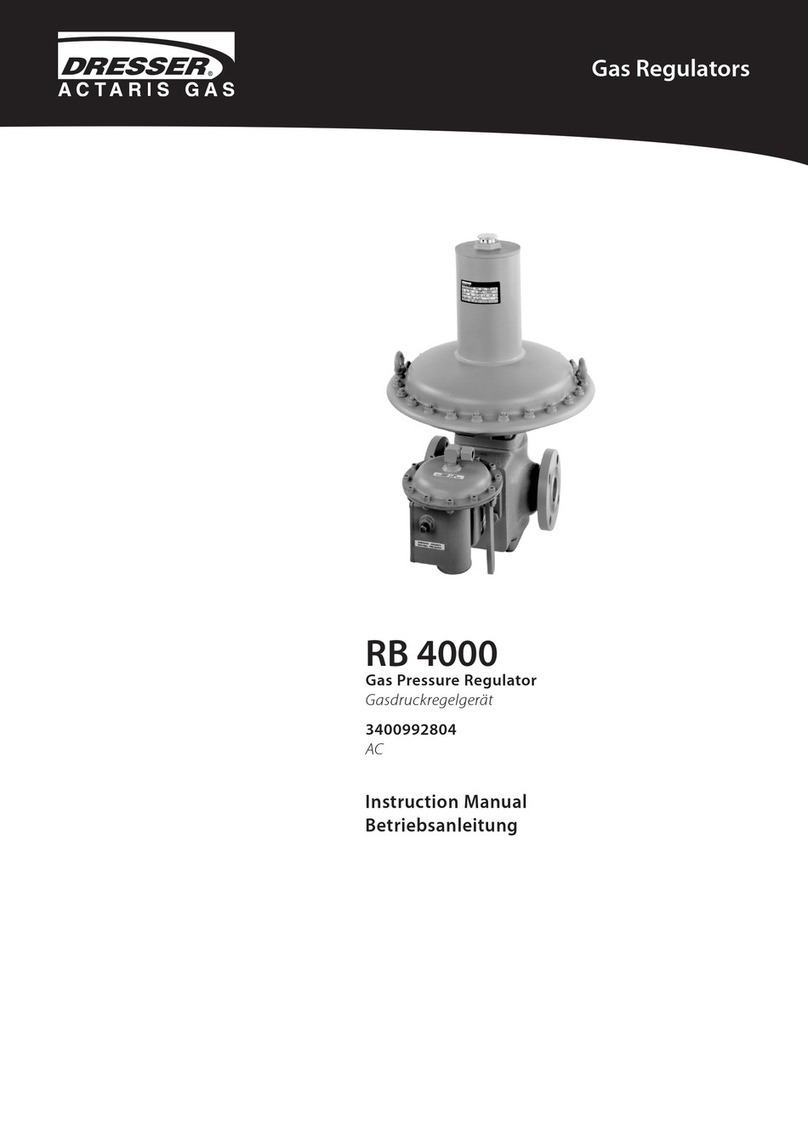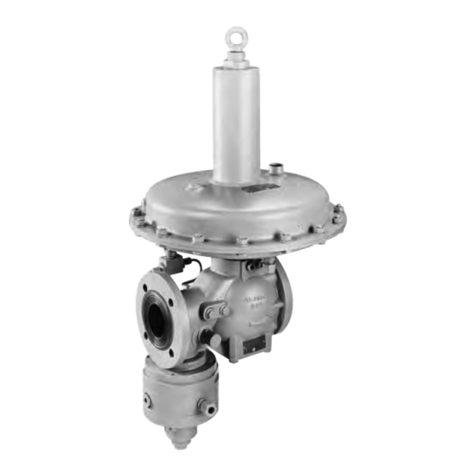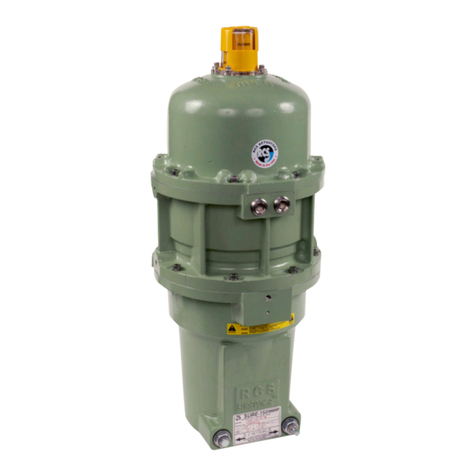
e. Upon reaching the opposite end of travel, Cam
2 should just engage the roller on Switch 2 so that
the switch just “breaks”. This action will
stop the actuator. Check that the actuator has
properly positioned the driven equipment.
f. If actuator travel is insufficient, rotate Cam 2
slightly clockwise until the cam just clears the roller
of Switch 2. As soon as the cam clears the roller, the
actuator will “bump” electrically towards the end of
travel. Continue until the actuator reaches the full
end of travel.
g. If the actuator has over-traveled, rotate Cam 2
slightly counter-clockwise, then move the actuator
towards the fail position electrically. Stop and
electrically reverse the direction of travel. Move the
actuator until Cam 2 operates Switch 2 and the
actuator stops. Repeat this procedure until the
actuator is properly positioned.
h. Rotate Cam 4 until it comes in contact with Switch
4’s arm roller and the switch just “breaks”. A light
“click” can be heard. Rotate the cam slightly
counter-clockwise. This ensures that Switch 4 will
“break” just prior to the actuator reaching the
extreme opposite end of travel. Tighten the
setscrews on Cams 2 and 4.
Switch adjustments for counter-clockwise spring fail
operation (viewed from the top of the actuator)
a. Ensure the actuator is de-energized and positioned
in the counter-clockwise (fail) position. Ensure
the end of travel stop is properly adjusted. Rotate
the screw counter-clockwise to move the actuator
output shaft in a counter-clockwise direction.
Rotate the screw in a clockwise direction to move
the actuator output shaft in a clockwise direction.
Loosen the setscrews on Cams 2 and 4. Rotate
both clockwise until they clear the switch arm
rollers of switches 2 and 4.
b. Rotate Cam 2 counter-clockwise until it comes
in contact with Switch 2’s roller arm and the switch
“breaks”. A light “click” can be heard. Tighten the
setscrews on Cam 2.
c. Rotate Cam 4 counter-clockwise until it comes in
contact with Switch 4’s arm roller and the switch
just “breaks”. A light “click” can be heard
CAUTION
Closely monitor the electrical stroke, as the travel limit
switches are not yet properly adjusted. Ensure the
actuator does not over-travel and damage the driven
equipment.
d. Rotate Cam 4 slightly further in the counter-clock
wise direction. This ensures that Switch 4 will
”break” just prior to the actuator reaching the full
fail position. Tighten the setscrews on Cam 4. Use
care to not over-tighten the set screws.Energize
the actuator. This will move the actuator to
the opposite end of travel.
e. Upon reaching the opposite end of travel,
Cam 1 should just engage the roller on Switch 1 so
that the switch just “breaks”. This action will stop
the actuator. Check that the actuator has properly
positioned the driven equipment.
f. If actuator travel is insufficient, rotate Cam 1slightly
counter-clockwise until the cam just clears the
roller of Switch 1. As soon as the cam clears the
roller, the actuator will “bump” electrically towards
the end of travel. Continue until the actuator
reaches the full end of travel. If the actuator has
over-traveled, rotate Cam 1 slightly
counter-clockwise, then move the actuator
towards the fail position electrically. Stop and
electrically reverse the direction of travel. Move
the actuator until Cam 1operates switch 1 and the
actuator stops. Repeat this procedure until the
actuator is properly positioned.
g. If the actuator has over-traveled, rotate Cam 1
slightly clockwise, then move the actuator towards
the fail position electrically. Stop and electrically
reverse the direction of travel. Move the actuator
until Cam 1 operates switch 1 and the actuator
stops. Repeat this procedure until the actuator is
properly positioned.
h. Rotate Cam 3 until it comes in contact with Switch
3’s arm roller and the switch just “breaks”. A light
“click” can be heard. Rotate the cam slightly further
in the clockwise direction. This ensures that Switch
3 will “break” just prior to the actuator reaching the
extreme opposite end of travel. Tighten
the setscrews on Cams 1 and 3. Use care
to not over-tighten the set screws.
6. Operate the actuator electrically several times to ensure
proper operation and to verify that travel limits and stops are
correctly set.
7. De-energize the actuator to verify proper spring failure
operation. Ensure the driven device is properly positioned in
the spring failure position.
8. If the actuator is supplied with an optional feedback
potentiometer and/or position controller, verify proper
calibration of input and output signals after making cam and
stop bolt adjustments.
9. Replace the actuator cover and cover screws. Before
installing the cover, make sure both flange surfaces are clean
and free of any deris, and that the cover o-ring is in the
machined groove in the lower housing and properly seated.
Also make sure that the indicator beacon is in the proper
orientation.
10. The actuator is now ready for electrical operation.


































